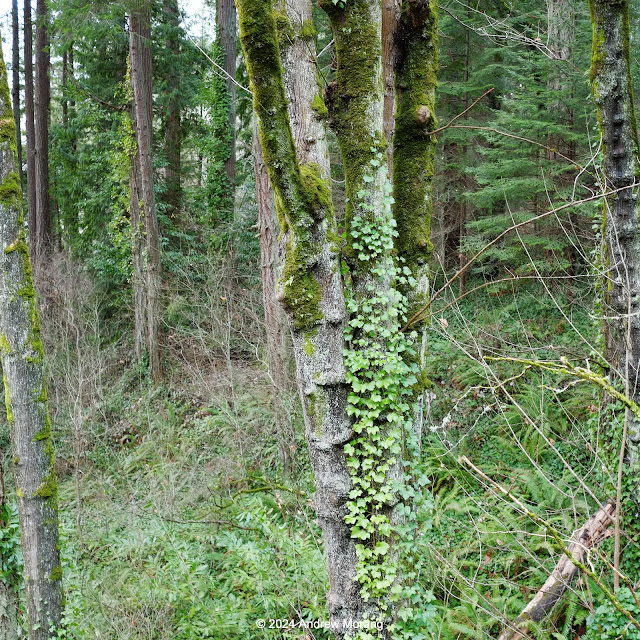Squaxin Park, formerly known as Priest Point Park, is a 314 acre oasis of big trees, mosses, and ferns just north of downtown Olympia on the east shore of Budd Inlet. The Steh-Chass (People of the Water) settled this land for centuries, living in villages along the shores of Budd Inlet. In 1848, Catholic missionaries, the Oblate Fathers, came to the area with sponsorship or funding by the Hudson’s Bay Company. The Oblate Fathers displaced the Steh-Chass, cleared the land, and established the St. Joseph d’Olympia Mission and school. The Mission only lasted until 1860, after which the land lay idle for 45 years. In 1905, a group of land investors deeded some of the land to the City of Olympia to form a park.
 |
| Priest Point Park, early 1910s (from City of Olympia) |
The original park name was Priest Point, but the priests were only there for 12 years. Converting heathens must have proven a bit too difficult or not sufficiently lucrative.
The importance of this timeline is that the forest in the park has been largely undisturbed for about 150 years. This is not old growth forest but is as close as you will encounter near an urban area. The dense mosses, ferns, and towering tree trunks hint at what old growth forest might have looked like. Pockets of old growth or at least very old trees exist in the Olympic Peninsula, but Squaxin Park is closer and easier to reach (and it is only a 10 minute walk north of where I live).
 |
| Ellis Cove at low tide |
 |
| Woods above Mission Creek |
 |
| Dusk in Squaxin (1+ sec. exposure) |
 |
| Trail to Ellis Cove |
 |
| Rest area at Ellis Cove |
I took these pictures with my little Fuji X-E1 digital camera and the compact 27mm ƒ/2.8 Fuji lens. I have not exercised this kit much in the last few years but need to refamiliarize myself with its functions. It is convenient and easy to use. For most of the pictures above, I used the Astia simulation and set the frame to 1:1 to resemble the square frame of a Rolleiflex. This crops off the edges, so you end up with fewer pixels in your files. One of the µ4/3 Panasonic cameras, the GH2, had a multi-aspect ratio sensor, so setting various frame sizes used different parts of the oversized sensor. But I think all current digital cameras simply chop off part of the frame.
Digital is certainly convenient. The pictures are usually "sharp" (whatever that means), the exposure is usually decent, and the camera adjusts the white balance for many light conditions. You take pictures, go home, download the files, and you are ready to use them. I formerly would open the raw files and adjust them with software, but honestly, the jpeg files that the camera computes look fine for 8-bit web display. I never got into the use of Lightroom or developing a secret formula to manipulate the raw files.
Despite having used 4/3, µ4/3, APS, and compact digital cameras, I think the best digital files in my archives are from a 2005-vintage 10 mpixel Sony DSC R1 camera. Despite being "early" technology, the output was superb.


2 comments:
Interesting images of the area. Moss is one of my favorite images.
How nice to have easy access to a piece of the rainforest. I'm with you on the older digitals. Recently got a Canon 1000 from 2008 with 10 megapixels, which is more than enough for my purposes.
Post a Comment